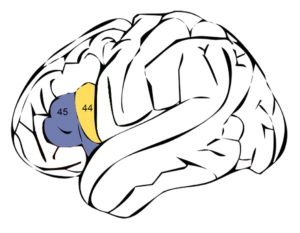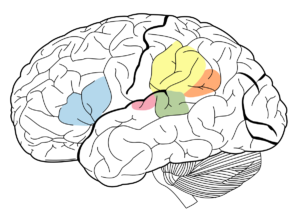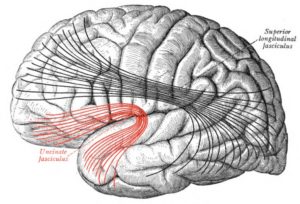
What parts of the brain process language?
We humans produce the most complicated calls out of all the animals on earth.
Considering the combinations and permutations of vowels and consonants that humans can use, the number of possible patterns is almost infinite, and the rate of speech is about 15 phonemes a minute.
In addition, human calls are formed not just from words, but complex syntactic structures that include grammar and inclusion relationships. Considering this, I think that immediately understanding the contents indicated by the strange rapid-fire calls that people send out is quite a difficult task. How, then, do our brains process this information?
The brain that processes language: Broca’s area and Wernicke’s area
The brain has regions that are specialized in various functions, such as seeing and hearing, and Broca’s area and Wernicke’s area are well known as regions relating to language.

In very, very broad terms, we learn in school that Broca’s area is for speaking functions and Wernicke’s area is for hearing functions, but as I wrote earlier, language is more than mere sounds, and also includes grammar, meaning and inclusion relationships.
Further, Broca’s area is divided into areas 44 and 45 in Brodmann’s map of the brain, and Wernicke’s area is composed of an extensive area from the lower rear of the parietal lobe (the inferior parietal lobule) to the middle and rear of the temporal lobe.


So, how do these complicated brain regions process the complicated information of “language”?
The nerve fibers linking Broca’s area and Wernicke’s area
The brain is not actually packed with nerve cells—these are mostly found on the surface of the brain, and under the surface are many nerve fibers that connect the nerve cells.
Broca’s area and Wernicke’s area also have nerve fibers linking them, and to these are related the thick nerve fiber bundles known as the superior longitudinal fasciculus (SLF) and the uncinate fasciculus (UF).

The paper I discuss today is a review article about the relationship between these nerve fibers and language processing.
According to the paper, language is mainly formed from syntactic information (the framework of language, such as the subject and the predicate, and inclusion relationships) and meaning information (the meaning that language has, the flesh of the language).
It suggests that syntactic information is processed by linking Brodmann area 44, which comprises Broca’s area, via the superior longitudinal fasciculus, to the posterior temporal lobe (the superior temporal sulcus and the posterior super temporal gyrus), which is Wernicke’s area,
while meaning information is processed by the route that links Brodmann area 45, which comprises Broca’s area, to the medial portion of the temporal lobe (the central portion of the superior temporal gyrus/middle temporal gyrus).
Some people with autistic spectrum disorder have difficulty hearing words or comprehending their meaning but can still express and construct sentences well, and I wondered whether this imbalance could be due to the lack of simplicity in the language processing system.
Reference URL: Pathways to language: fiber tracts in the human brain.











